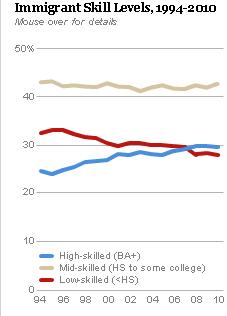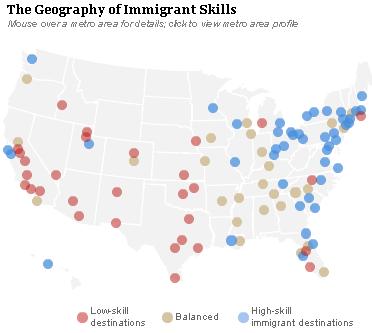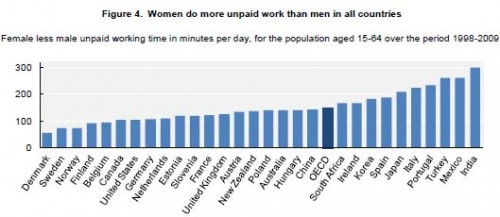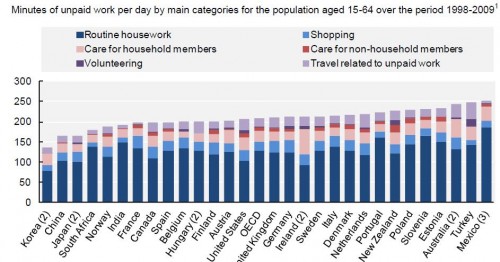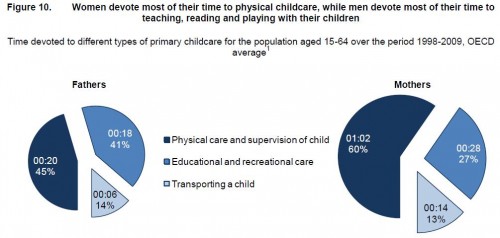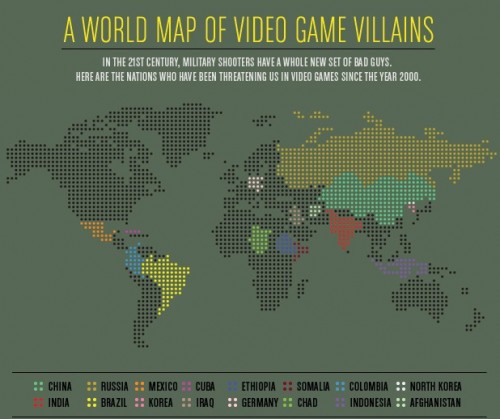Katrin brought our attention to a report from the Brookings Institution about the educational levels of immigrants to the U.S., based on data from the 2009 American Community Survey as well as Census data between 1900 and 2000. As a group, immigrants have significantly more education than common stereotypes might lead you to believe. In fact, there are now more immigrants with at least a 4-year college degree than with less than a high-school diploma (27.8%):
Overall, immigrants still have lower levels of education than native-born U.S. citizens. While the proportion with a college degree is comparable (32% of the native-born and 29.6% of immigrants have a 4-year degree or higher), the immigrant population is much more likely to have less than a high school diploma (27.8% vs. 7% for the native-born).
The proportion of immigrants falling into the high- or low-education categories varies significantly by destination city. The study authors calculated the ratio of high-skill to low-skill immigrants (where skill is defined as education level, as in the graph above) for the 100 largest metro areas. High-skill destinations have more than 125 college-educated immigrants per 100 immigrants with less than a high school diploma; low-skill cities have fewer than 75. A city was defined as “balanced” if there were between 75 and 125 high-skill immigrants per 100 low-skill immigrants.
A map of the ratios shows that of the 100 largest metro areas, those in the eastern half of the U.S. (especially the Northeast) attract more educated immigrants, while the Great Plains and West (especially California, Arizona, New Mexico, and Texas) have lower-educated immigrant population. Balanced-skills cities are concentrated in the Midwest and Southeast:
Not surprisingly, cities with universities attract more highly-educated immigrants, while those with economies based on agriculture or food processing are more likely to be destination sites for immigrants with less education.
Here’s a video of one of the authors, Audrey Singer, discussing the study and its implications:
You can also see the detailed information about the 100 largest metro areas. In the areas studied here, immigrants with less than a high school diploma are disproportionately from Mexico (57.3%, but with wide geographic variation — Mexican immigrants make up only 6.2% of low-skill immigrants in Buffalo but 85.8% in Austin), lack English skills (only 16.4% are proficient), and are unlikely to be naturalized citizens (26.2%). Among immigrants with a college degree, 5.5% are Mexican, 71.5% are English-proficient, and 54% are naturalized citizens. The full report has a detailed discussion of the factors at play here–historical immigrant settlement patterns, changes in which cities are gateways for arriving immigrants, and so on. If you’re interested in immigration issues and how they impact economic development, it’s definitely worth a read.

